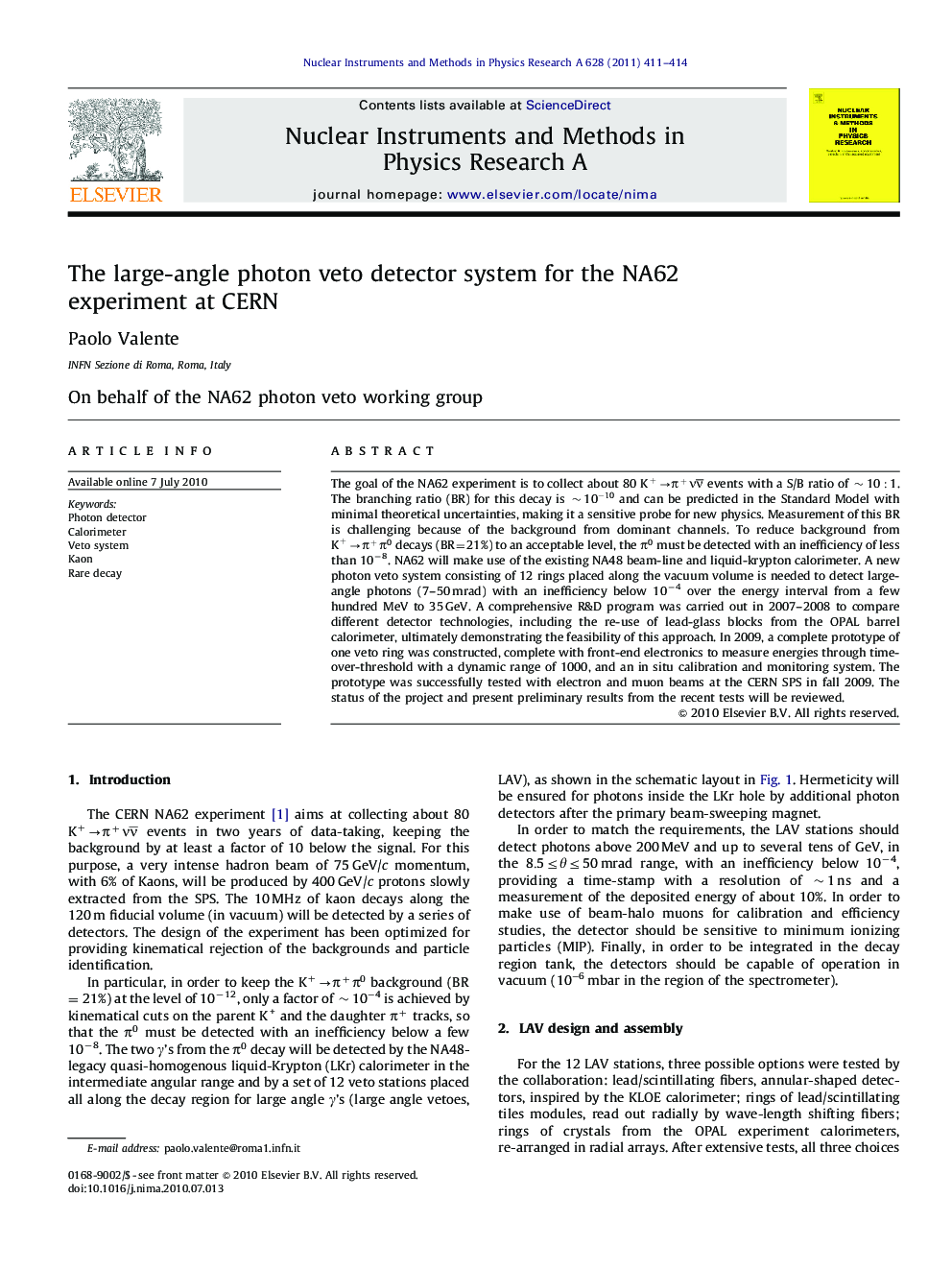| Article ID | Journal | Published Year | Pages | File Type |
|---|---|---|---|---|
| 1825586 | Nuclear Instruments and Methods in Physics Research Section A: Accelerators, Spectrometers, Detectors and Associated Equipment | 2011 | 4 Pages |
Abstract
The goal of the NA62 experiment is to collect about 80 K+âÏ+νν¯ events with a S/B ratio of â¼10:1. The branching ratio (BR) for this decay is â¼10â10 and can be predicted in the Standard Model with minimal theoretical uncertainties, making it a sensitive probe for new physics. Measurement of this BR is challenging because of the background from dominant channels. To reduce background from K+âÏ+Ï0 decays (BR=21%) to an acceptable level, the Ï0 must be detected with an inefficiency of less than 10â8. NA62 will make use of the existing NA48 beam-line and liquid-krypton calorimeter. A new photon veto system consisting of 12 rings placed along the vacuum volume is needed to detect large-angle photons (7-50 mrad) with an inefficiency below 10â4 over the energy interval from a few hundred MeV to 35 GeV. A comprehensive R&D program was carried out in 2007-2008 to compare different detector technologies, including the re-use of lead-glass blocks from the OPAL barrel calorimeter, ultimately demonstrating the feasibility of this approach. In 2009, a complete prototype of one veto ring was constructed, complete with front-end electronics to measure energies through time-over-threshold with a dynamic range of 1000, and an in situ calibration and monitoring system. The prototype was successfully tested with electron and muon beams at the CERN SPS in fall 2009. The status of the project and present preliminary results from the recent tests will be reviewed.
Related Topics
Physical Sciences and Engineering
Physics and Astronomy
Instrumentation
Authors
Paolo Valente, On behalf of the NA62 photon veto working group On behalf of the NA62 photon veto working group,
